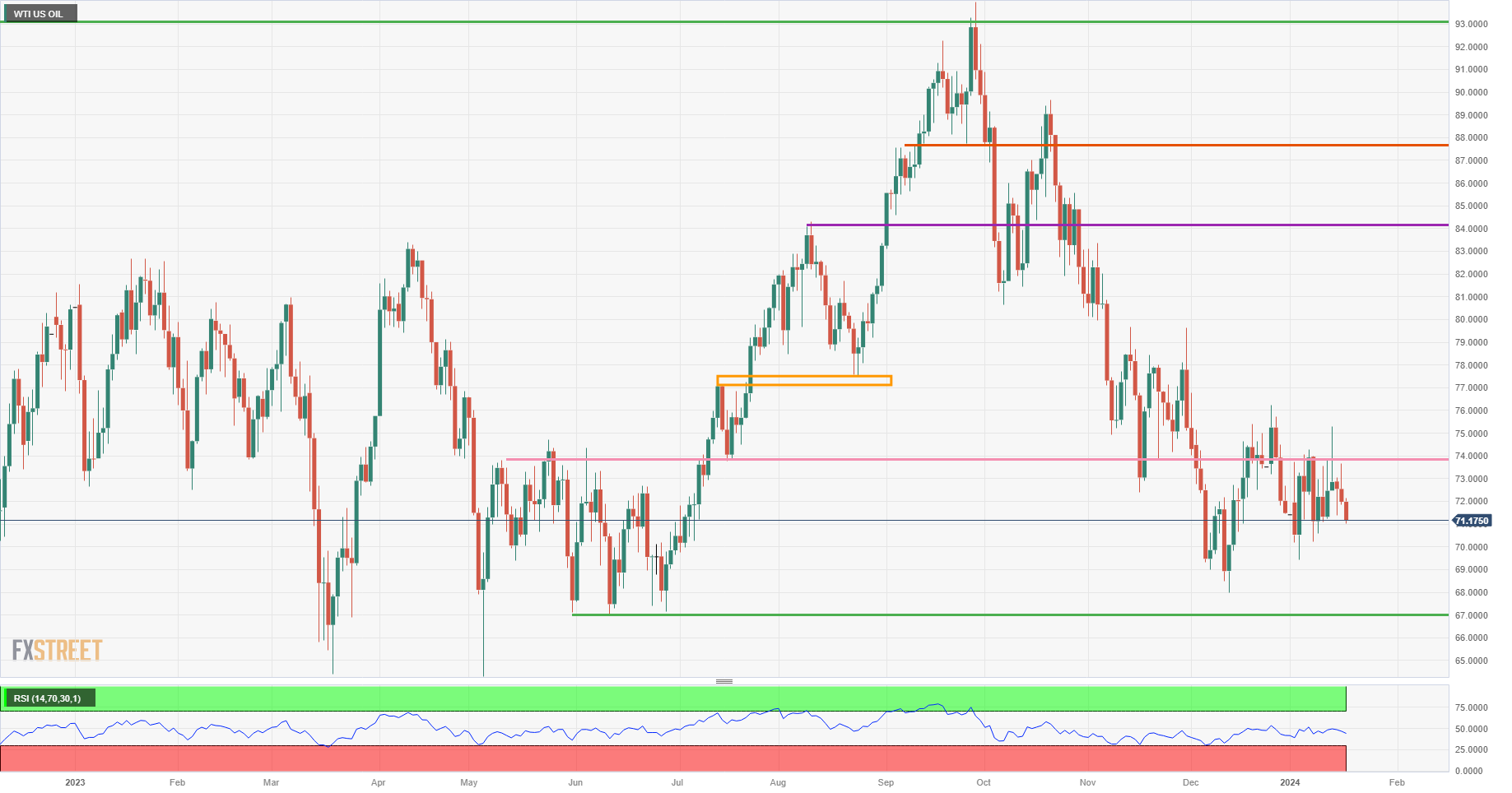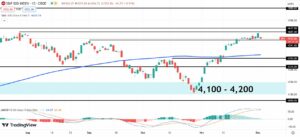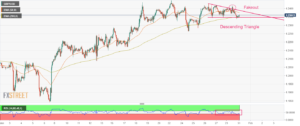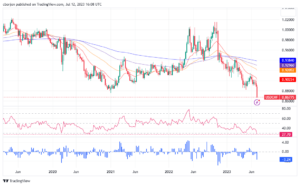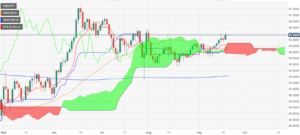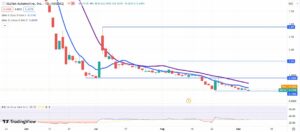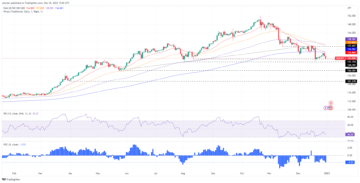- WTI Oil sinks further as oversupply keeps hitting markets.
- Recent OPEC monthly report looks to 2025 for substantial recovery.
- The US Dollar Index popped above 103 and is at crossroads with more upside on the radar.
Oil prices are remaining depressed this week and throughout this Wednesday with the monthly OPEC report unable to trigger any changes. It gets even worse when looking at the report, where OPEC speaks of recovery and a deficit in late 2025. That means OPEC is throwing in the towel when it comes to 2024 and salvaging the current price levels, being unable to lift them higher under current circumstances.
Meanwhile, the DXY US Dollar Index is back on the map with first the victory of the former US President Donald Trump in Iowa triggering a substantial appreciation of the Greenback. A second appreciation came overnight with US Federal Reserve’s Christopher Waller who backtracked on earlier dovish comments and now pushed back against the enthusiasm of the markets. In a repricing towards interest rates remaining steady for longer, equities are dropping, yields are soaring and the Greenback has the wind in its sails.
Crude Oil (WTI) trades at $70.93 per barrel, and Brent Oil trades at $76.52 per barrel at the time of writing.
Oil News and Market Movers: OPEC gives up on 2024
- The World Economic Forum in Davos is entering its third day with already quite a few comments from central bankers coming out.
- The Monthly OPEC Market report has been released. The report sees demand picking up further in 2025 and pushed back the supply deficit into the later part of 2025.
- Near 21:30, the American Petroleum Institute (API) is due to release the weekly Crude Oil Stockpile. Previous number was a big drawdown of 5.215 million barrels.
- Local Oil prices in the US are seeing a wider differential with the Bakken shale production facing an outage. Prices near Houston went up by $2.20 per barrel against Cushing (Oklahoma) prices. Substantial drawdowns might occur at Cushing as well, as Midwest refiners will need to revert to Cushing, in order to replace lost supply out of Bakken via the Dakota pipeline.
Oil Technical Analysis: OPEC unable to deliver a floor in oil prices
Oil prices are being hit again, for a third day this week. While already trading at a weekly loss, the revelation that Russia is breaching the production cuts it committed to, means bad news for the balance between supply and demand. Another surge in supply means the balance is titled again to lower prices with refiners and buyers have the luxury to pick out the cheapest one to buy from in an overcrowded market of sellers.
On the upside, $74 continues to act as a line in the sand after yet another failed break above it on Friday. Although quite far off, $80 comes into the picture should tensions build further. Once $80 is broken, $84 is next on the topside once Oil sees a few daily closes above the $80 level.
Below $74, the $67 level could still come into play as the next support to trade at, as it aligns with a triple bottom from June. Should that triple bottom break, a new low for 2023 could be close at $64.35 – the low of May and March – as the last line of defence. Although still quite far off, $57.45 is worth mentioning as the next level to keep an eye on if prices fall sharply.
US WTI Crude Oil: Daily Chart
WTI Oil FAQs
WTI Oil is a type of Crude Oil sold on international markets. The WTI stands for West Texas Intermediate, one of three major types including Brent and Dubai Crude. WTI is also referred to as “light” and “sweet” because of its relatively low gravity and sulfur content respectively. It is considered a high quality Oil that is easily refined. It is sourced in the United States and distributed via the Cushing hub, which is considered “The Pipeline Crossroads of the World”. It is a benchmark for the Oil market and WTI price is frequently quoted in the media.
Like all assets, supply and demand are the key drivers of WTI Oil price. As such, global growth can be a driver of increased demand and vice versa for weak global growth. Political instability, wars, and sanctions can disrupt supply and impact prices. The decisions of OPEC, a group of major Oil-producing countries, is another key driver of price. The value of the US Dollar influences the price of WTI Crude Oil, since Oil is predominantly traded in US Dollars, thus a weaker US Dollar can make Oil more affordable and vice versa.
The weekly Oil inventory reports published by the American Petroleum Institute (API) and the Energy Information Agency (EIA) impact the price of WTI Oil. Changes in inventories reflect fluctuating supply and demand. If the data shows a drop in inventories it can indicate increased demand, pushing up Oil price. Higher inventories can reflect increased supply, pushing down prices. API’s report is published every Tuesday and EIA’s the day after. Their results are usually similar, falling within 1% of each other 75% of the time. The EIA data is considered more reliable, since it is a government agency.
OPEC (Organization of the Petroleum Exporting Countries) is a group of 13 Oil-producing nations who collectively decide production quotas for member countries at twice-yearly meetings. Their decisions often impact WTI Oil prices. When OPEC decides to lower quotas, it can tighten supply, pushing up Oil prices. When OPEC increases production, it has the opposite effect. OPEC+ refers to an expanded group that includes ten extra non-OPEC members, the most notable of which is Russia.
- SEO Powered Content & PR Distribution. Get Amplified Today.
- PlatoData.Network Vertical Generative Ai. Empower Yourself. Access Here.
- PlatoAiStream. Web3 Intelligence. Knowledge Amplified. Access Here.
- PlatoESG. Carbon, CleanTech, Energy, Environment, Solar, Waste Management. Access Here.
- PlatoHealth. Biotech and Clinical Trials Intelligence. Access Here.
- Source: https://www.fxstreet.com/news/oil-takes-a-hit-with-russia-not-complying-to-opec-production-cuts-202401171145
- :has
- :is
- :not
- :where
- $UP
- 13
- 20
- 2023
- 2024
- 2025
- 30
- 32
- 35%
- a
- above
- Act
- affordable
- After
- again
- against
- agency
- Aligns
- All
- already
- also
- Although
- American
- an
- analysis
- and
- Animate
- Another
- any
- api
- appreciation
- ARE
- AS
- Assets
- At
- back
- Bad
- Balance
- bankers
- barrels
- BE
- because
- been
- before
- being
- Benchmark
- between
- Big
- Bottom
- Break
- brent
- Broken
- build
- buy
- buyers
- by
- came
- CAN
- central
- central bankers
- Changes
- Chart
- cheapest
- Christopher
- Christopher Waller
- circumstances
- Close
- Closes
- collectively
- come
- comes
- coming
- comments
- committed
- considered
- content
- continues
- could
- countries
- Crossroads
- crude
- Crude oil
- Current
- cuts
- daily
- Dakota
- data
- davos
- day
- decide
- decisions
- defence
- DEFICIT
- deliver
- Demand
- Disrupt
- distributed
- Dollar
- dollar index
- dollars
- donald
- Donald Trump
- Dovish
- down
- driver
- drivers
- Drop
- Dropping
- Dubai
- due
- Dxy
- each
- Earlier
- easily
- Economic
- Economic Forum
- effect
- EIA
- end
- ends
- energy
- entering
- enthusiasm
- Equities
- Even
- Every
- expanded
- extra
- eye
- facing
- Failed
- Fall
- Falling
- FAQ
- far
- Federal
- Federal Reserve’s
- few
- First
- Floor
- For
- Former
- Forum
- frequently
- Friday
- from
- further
- gives
- Global
- Government
- gravity
- Greenback
- Group
- Growth
- Have
- High
- higher
- Hit
- hitting
- houston
- HTTPS
- Hub
- if
- Impact
- in
- includes
- Including
- increased
- Increases
- index
- indicate
- information
- instability
- Institute
- interest
- Intermediate
- International
- into
- inventory
- Iowa
- IT
- ITS
- june
- Keep
- Key
- Last
- Late
- later
- Level
- levels
- Line
- longer
- looking
- LOOKS
- loss
- lost
- Low
- lower
- Luxury
- major
- make
- map
- March
- Market
- Market Report
- Markets
- May..
- means
- Media
- meetings
- member
- Members
- midwest
- might
- million
- module
- monthly
- MONTHLY REPORT
- more
- most
- Movers
- Nations
- Near
- Need
- New
- news
- next
- notable
- now
- number
- occur
- of
- off
- often
- Oil
- oil price
- Oklahoma
- on
- once
- ONE
- opec
- opposite
- order
- organization
- Other
- out
- outage
- overnight
- part
- per
- Petroleum
- pick
- picking
- picture
- pipeline
- plato
- Plato Data Intelligence
- PlatoData
- Play
- political
- predominantly
- president
- President Donald Trump
- previous
- price
- Prices
- Production
- published
- pushed
- Pushing
- quality
- quite
- radar
- recovery
- referred
- refers
- refined
- reflect
- relatively
- release
- released
- reliable
- remain
- remaining
- replace
- report
- Reports
- reserves
- respectively
- Results
- revelation
- revert
- Russia
- Sanctions
- SAND
- Second
- seeing
- sees
- Sellers
- Shale
- should
- Shows
- similar
- since
- soaring
- sold
- sourced
- Speaks
- stands
- starts
- States
- steady
- Still
- substantial
- such
- supply
- Supply and Demand
- support
- surge
- Technical
- Technical Analysis
- ten
- tensions
- texas
- that
- The
- The Weekly
- their
- Them
- Third
- this
- this week
- three
- throughout
- Throwing
- Thus
- tighten
- time
- titled
- to
- towards
- trade
- traded
- trades
- Trading
- trigger
- triggering
- Triple
- trump
- Tuesday
- type
- types
- unable
- under
- United
- United States
- Upside
- us
- US Dollar
- US Dollar Index
- US Dollars
- US Federal
- US oil
- US President
- usually
- value
- via
- vice
- victory
- was
- weaker
- Wednesday
- week
- weekly
- WELL
- went
- West
- when
- which
- while
- WHO
- wider
- will
- wind
- with
- within
- world
- World Economic Forum
- worse
- worth
- writing
- WTI
- WTI Crude
- yet
- yields
- zephyrnet

